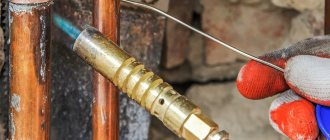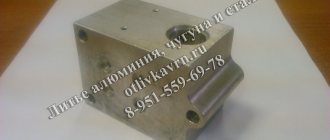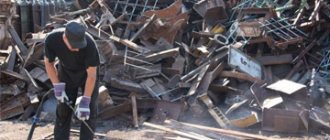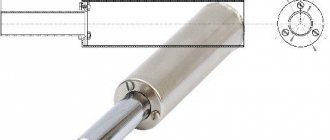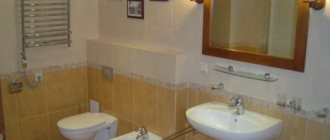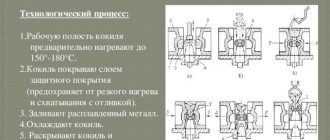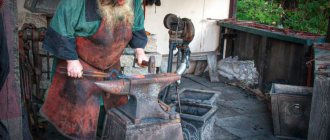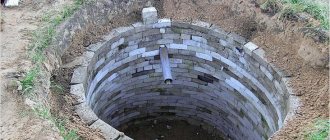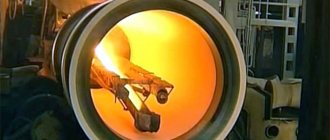The absence of teeth in the mouth leads not only to psychological discomfort, but also to dentition and difficulty chewing food. Therefore, they often resort to dental prosthetics, and the casting of dentures has received active development in this matter.
Today, this technology for the manufacture of dental prosthetics is being improved in accordance with modern advances in medical technology. Many dentists prefer this method of making dentures due to its reliability, individuality and the ability to use various materials.
Advantages of cast dentures
Cast dentures can be single or bridge-like, covering several teeth. Depending on which part of the dentition needs to be replaced, there are crowns used to completely replace a tooth, structures that restore a damaged tooth in the presence of a stump, crowns that restore the height of a tooth, and half-crowns necessary to support dentures in the mouth. In order to determine what type of prosthetic dental structure is needed in a particular case, a detailed consultation with a dentist is required.
Metal cast dentures have been used in dentistry for many decades; over the years they have been repeatedly improved, maintaining and increasing their positive qualities. Using this technique, permanent prosthetic structures for teeth are made.
Among the main advantages of dentures made by casting are the following:
- The method of manufacturing such dental prostheses ensures their tight fit without damaging the oral mucosa. This not only increases the aesthetics and comfort when using dentures, but also reduces the likelihood of oral diseases.
- Thanks to the materials and manufacturing methods used, prosthetic structures made by casting are characterized by a long service life. Dentures require replacement or adjustment no more than once every 10 years.
- The materials from which such dentures are made prevent the accumulation of pathogenic microbes in the mouth.
- Safety for teeth is ensured by the strength of the materials from which such dentures are made. They allow you to avoid grinding and deformation of teeth, which is important when installing cast bridges, which cover healthy teeth on both sides of the missing teeth to be replaced.
- The affordable cost of such dental prostheses is an important factor for many clients of dental clinics, since among them there are often pensioners and other socially vulnerable segments of the population.
- Precision in the manufacture of dentures is ensured by casting technology. Due to the fact that the cast dental prosthesis is made in one piece and does not require soldering of small parts, it fits tightly in the mouth and occupies the space in the mouth that was intended for natural teeth.
- Comfort when wearing and the patient’s quick adaptation to a new denture is one of the main advantages from the point of view of those who will wear it.
These distinctive features of cast oral dentures make them popular and widely used in prosthetic dentistry.
Foundry models
Models for this form of sand casting must withstand quite a lot of pressure that occurs when filling the flask with casting soil. That is why metal and hard wood are used to make injection molds. All materials that can be used to make injection molds can be combined. That is, they can be assembled on threaded connections, glued, etc. To eliminate pores on the wooden parts of the models, they are carefully treated with abrasive sandpaper. Then it is varnished. When making casting molds, it is necessary to take into account the fact that it is necessary to maintain the angles of inclination of the vertical planes. The presence of these corners will subsequently make it easier to remove the finished casting from the mold.
Basic elements of casting in sand-clay molds
One of the key factors determining the quality of casting is the properties of the sand (earth) used to obtain casting equipment. Practice shows that the finer and purer the sand, the higher the quality of the resulting casting will be. We must not forget about the rods, which can be multi- or disposable.
General classification of sand molding sands
Depending on the application, the mixtures can be divided into the following subtypes:
- facing them are used to create the working surface of the mold;
- single (filler), they are used directly to create the mold.
General classification of sand molding sands
Facing materials have a thickness that is determined by the thickness of the future casting; it can be 20 – 100 mm. A filler mixture can be poured on top of the mixture used for cladding. A filler or single mixture is used to fill the entire mold and is used for the production of equipment for all types of production, from single products to mass production.
Making sand casting mold
Sand casting begins with its creation. A distinctive feature of sand tooling is that they can only be used once and to obtain a new part it is necessary to make a new one.
The equipment is produced with a model of the future part in hand. It is installed in a flask (a wooden or metal box for molding sand) and covered with earth. Then it is necessary to compact the filled sand mixture. To do this, use manual or mechanized impact tools and devices. Once the mixture reaches the required condition, that is, the required density, the model is removed and the foundry workers will have ready-made technological equipment at their disposal.
To obtain cavities located inside the future casting, rods are used. They are usually made from the same material as the equipment itself. The process of producing a sand casting mold includes the following main steps.
- installation of the model in the flask;
- compaction of the sand mixture;
- removing the model from the flask.
The complexity and technology of production of foundry equipment largely depends on the following parameters:
- the size of the future casting;
- number of cavities;
- type of equipment.
If the mold being manufactured requires additional heating or baking, the time required for its production will increase sharply. To facilitate the removal of the finished casting, various lubricants, for example, grease, are applied to the working surfaces.
Sand casting mold assembly
After the casting tooling has been produced, it is prepared for pouring the melt. The working surfaces must be lubricated with a special compound that facilitates the free removal of the finished casting. After preparing the working surfaces, the injection molding rods are installed.
Mold making process
At the final stage, the half-forms are connected to each other and securely fastened. The reliability of the assembly will not allow the melt to flow out of the mold.
Indications and contraindications for the installation of cast dentures
Despite the fact that modern medical technology has advanced quite far, the use of cast dentures in the form of bridges or individual crowns is often used in connection with many indications. Prosthetic dentures, which are important for chewing food, are often replaced with just such prosthetic structures for teeth, because they replace several teeth at once. At the same time, financial savings occur.
This type of prosthesis is used for the restoration of teeth with a short crown part. The fact is that such a pathology makes it impossible to install structures using more modern techniques and prostheses made from other materials. In addition, this type of structure is used to replace dentures that have already served their purpose.
However, this type of dentures is not used in people with poor blood clotting, the presence of tumor diseases, bone damage, allergies to painkillers and acute inflammatory processes. Dentists often do not recommend the installation of cast dentures for people with malocclusion, poor oral hygiene, and those who suffer from high grinding of chewing teeth.
Technique for casting prosthetic structures
Cast dental bridges, single-tooth metal crowns and partial dentures are made using lost wax casting. Since cast dentures have been used for a long time, many techniques and rules have been developed that allow such structures to be performed with the highest quality. Several factors play an important role in this process. One of the primary ones is the choice of investment material. Today they can be phosphate, silicone and gypsum-based. Regardless of which type of forging material the dental technician chooses for oral treatment, they have a number of common characteristics:
- Stable thick consistency;
- Long working hours;
- Good mixability;
Stable expansion rates during heat treatment. All investments are mixed only in vacuum mixers. This is done in order to prevent the formation of air bubbles, which expand when heated and lead to inaccurate dental prostheses. Therefore, it is important to choose a high-quality device for mixing material under vacuum.
In addition, the intensity of mixing the material plays an important role in the manufacture of dentures. Modern materials allow vibration to be applied only before the wax surface is introduced. Then the vibration turns off. This avoids the formation of voids and cracking of the prosthetic structure for the teeth.
The choice of material from which cast fixed dentures will be made is important for the reason that the durability of the products and their comfort in wearing and antiseptic properties depend on it. Before installing dentures in your mouth, you need to discuss these nuances with your dentist and dental technician. After this, a bridge or other prosthetic structure for the teeth is cast. At the request of the patient, the cast denture can be lined with ceramic or plastic material.
Thus, the work of dental technicians in the manufacture of such prosthetic structures for teeth requires the use of a large amount of medical equipment and various high-tech materials.
Manufacturing of casting molds and cores
§ 32.
The technological process of manufacturing casting molds is called moulding. There are manual and machine molding. In manual molding, model molding is most widely used. This molding is carried out in the soil - a continuous layer of earth located on the floor of the workshop or in the flasks.
Rice. 29. Molding according to the model in two flasks: 1 - model, 2 - sub-model flask, 3 - lower flask, 4 - upper flask, 5 - riser model, 6 - channels for gas outlet
The most widespread is the molding of parts according to a model in two flasks (Fig. 29, a, b, c, d). The main operations of manual molding are compaction of the molding sand in the flask and removal of the model from the mold. Compacting the molding sand is labor-intensive work, and removing the model requires skill and precision.
Schemes of operation of various types of molding machines are shown in Fig. 30. In the pressing machine (Fig. 30, a) compressed air or oil under pressure enters cylinder 7 and lifts piston 6 together with table 5, model 3, flask 4 and frame 2 so , which compacts the molding mixture in the flask, after which air or liquid is released from cylinder 7. Shaking machines are used without pre-pressing (Fig. 30, b) and with upper pre-pressing (Fig. 30, c). Shaking is carried out by compressed air entering through channels 8 and 9 under piston 6 and lifting
it to the level of the channel through which the air exits into the atmosphere. After this, the piston, together with the machine table, model, flask and molding sand, falls down, the table hits the machine bed, and the mixture is compacted. Then the cycle repeats. In machines with pre-pressing (Fig. 30, c), the shaking piston 6 rises inside the cylinder 10, which itself serves as a piston during pre-pressing. For pre-pressing, compressed air is injected under the piston-cylinder 10, which lifts the piston along with all other parts and the flange to the sealing block 1, as a result of which the mixture is pre-pressed.
Rice. 30. Diagram of operation of various molding machines: c - press, b - shaking, e - shaking with pre-pressing, d - sand-throwing
Unlike shaking and pressing machines, the sand blower compacts the molding sand and molding box by the action of centrifugal force. The working part of the sand thrower is a rapidly rotating blade, which throws the mixture at high speed into the flask. The sand thrower head 3 (Fig. 30, d) is a casing in which a blade 1 rotates around a horizontal axis. The molding mixture is continuously fed into the sand thrower head by a belt conveyor 2, is captured by the blade and is thrown out at high speed through hole 4 into a substitute flask, where the mixture compacted.
The process of making rods is in many ways similar to molding, but there are specific features regarding the design of the rods and the methods for their manufacture. The rods must have high gas permeability and strength, since when poured they are surrounded on all sides by liquid metal. To improve these properties, the rods are dried in
furnaces on special shaped or flat metal plates. To increase the strength of the rods, reinforcement is molded into them (in the form of cast frames or metal rods), and ventilation ducts are made to improve gas removal. The most common method of producing cores is in core boxes, the internal space of which is filled with a core mixture, compacted in one way or another.
The simplest rods are made in one-piece boxes. In most cases, the box consists of two or more parts, which are tightly connected on spikes, fastened with staples (Fig. 31). The manual method of making rods is low-productivity and labor-intensive. Currently, machine methods for producing rods are widely used. According to the method of compacting the core mixture, machines are divided into mouthpiece, press, shaking, sand-blowing, sand-shooting and sand-throwing machines. The most common are shaking and sand blowing machines.
Rice. 31. The main types of core boxes: a - solid, b - split, c - shakeout; 1—rod, 2—box body, 3, 4, 5—liners
Stages of denture casting
The process of making dentures by casting is long and labor-intensive - during the work, dental technicians and dentists carry out measures to cast and adjust prosthetic structures for a specific oral cavity. The work consists of several stages.
First of all, to correctly determine the parameters of dentures, impressions of the lower and upper jaws are taken. To obtain two-layer impressions of teeth, impressions are made in two stages: first with base material, and then with corrective material. Taking dental impressions is done in two ways:
- Without additional orthopedic means – used in case of preparation of tooth heads;
- Using orthopedic devices in the form of screws or other components. After this, the two-layer impression is removed with corrective material. Such prints are more accurate.
The process of taking impressions to make dentures takes only a few minutes and is not accompanied by pain, so anesthesia is not required. After this stage is completed, production of the working model begins. This blank is made from an alloy using nickel, gold, cobalt or titanium. Since this stage is quite long and takes from 5 to 30 days, the patient can have a temporary prosthesis made from cheaper materials installed during this time
Before starting modeling, the stamp is varnished to avoid unevenness. To obtain crowns, a set of waxes and a number of medical technical means are used to melt the material and give the prosthesis model the desired shape.
Modeling of the tooth crown begins with obtaining a cap by dipping a modeling stamp into a mass of molten dipping wax, which is maintained by a wax melter in the consistency that allows obtaining the required wall thickness of the cap. The wall thickness of the wax model of the cap used for lining with metal ceramics is very small - less than half a millimeter. This is the optimal thickness for the material to be cast well.
Then, using an electric spatula, the technician adds other waxes: cervical, modeling, milling. A gating system is formed from wax wire of the required diameter. The number and size of elements of the gating system are chosen so as to ensure not only filling of the mold, but also compensation for the decreasing volume of material due to shrinkage processes, otherwise pores and cavities in the casting are possible.
The next step is to make a casting mold from wax. It is important that the material is treated with a liquid that reduces the tension of the wax and fills small cavities. Another significant point is the same temperature of the material for all parts of the denture. The formation of the alloy structure and the quality of the casting of the product depend on this.
The production of a casting mold includes the procedure for obtaining a duplicate of the plaster model. Such a blank is made from a refractory alloy, and its internal contours must correspond to the contours of the model. During this process, the wax is burned off and the mold is heated to high temperatures necessary to melt the metal used. After this, the alloy is melted and cast. To avoid receiving a defective product, it is necessary to prevent overheating of the material. Otherwise, the product will turn out rough due to the destruction of the mold and the penetration of metal into its walls. Such a labor-intensive process requires high professionalism and the presence of certain knowledge and skills from the dental technician.
Once the design blank has been polished and matched to the patient’s dental impressions, decorative plastic or ceramic coverings are installed. However, this stage is optional, it depends on the wishes of the patient. It should be taken into account that ceramics is a more durable and strong material for installation on dental crowns; in addition, it looks very aesthetically pleasing after installing the prosthesis in the oral cavity.
The process of manufacturing a working model of the structure involves sandblasting and fitting in 2 stages:
- On the model;
- In the patient's mouth.
If the prosthesis meets the necessary requirements, then at this stage it can be installed. In other cases, the design is returned to the dental technician for revision.
Recommended files
Technical task
Requirements Engineering and Software Specification
FREE
Maran Software Engineering
Software engineering
FREE
Curriculum for PS3, PS4, PS5, PS6, PS7, RK 6, RL6, MT4, MT8, MT11, SM13
Physics
Calculation assignment for the course “Electrical Engineering” (part 2) option 4.
Electrical engineering
Report on Educational Practice SM4 (NUK SM MSTU named after N.E. Bauman) in Word/word 2021
Internship (educational, industrial, technological, summer)
-33%
Technological processes for assembling the track roller and manufacturing the part
Construction of technological processes (MT3)
| Alloy smelting | Alloy mold filling | Casting with gating system |
| Fig.3 Stages of the casting process | ||
Development of a casting drawing. The source document for developing a casting drawing is the part drawing (Fig. 2). On which the following instructions are applied for the manufacture of the model and casting: the position of the casting in the mold (determined by indicating the parting plane of the top and bottom according to the location of the casting in the mold); machining allowance 1; technological allowances (slopes, etc.), identification data and other requirements; in addition, the possibility of producing undercuts, holes, etc. using this casting method is determined.
a) part b) casting View of the flange according to A.
Fig.4 Sketch of part and casting
The location of the connector plane is determined based on the following:
1. The casting surfaces to be processed must be at the bottom;
2. The higher part of the casting should be located in the lower half of the mold;
3. Avoid curved connectors;
4. Ensuring easier removal of the model from the mold.
The parting plane is designated by sign 2, where B is the top and H is the bottom of the form.
Machining allowance is an additional layer of metal 1 (Fig. 42) that is removed during the machining process of the casting to provide precision and surface roughness that could not be achieved with the chosen casting method. The amount of allowance depends on the location of the casting in the mold. Usually the top allowance is larger than the bottom allowance. In the casting drawing, the allowance is indicated by shading or a red pencil.
Casting slopes serve for the convenience of removing models or castings (for injection molding and chill casting) from the mold. Slopes are assigned to the surface of the casting, located perpendicular to the parting plane. The dimensions of the slopes are indicated by the letter “a” (in millimeters or degrees). Depending on the height h of the model or casting, the slope regulated by GOST is 1-8 mm or 0.5-3.0°.
Identification data - the required dimensions, alloy grade, weight of the casting alloy, etc. are applied to the casting drawing.
Making the model and core box. Typically, a mold is made from a molding sand (a molding sand is a multicomponent mixture of molding materials, molding materials are natural and artificial materials (sand, clay, water and others) used for preparing molding sands) according to a model. A model is a device for obtaining in the form of an imprint corresponding to the configuration and dimensions of the casting. To simplify the process of making a mold, the model is most often divided into two parts, into which the half-molds are made separately (for a sketch of the model, see Fig. 64). To connect the parts of the model, centering pins are provided. The surface of the model should be smooth and clean, so that when it is removed from the mold, it can be easily separated from the molding sand.
Rice. 53 Sequence of casting production.
Rice. 64 Sketch of the model.
Holes or internal cavities of the casting are formed by separate parts of the mold - cores (casting core - an element of a casting mold for forming a hole, cavity or other complex contour of the casting) which are made in core boxes (core box - a device that has a working cavity for obtaining the required core in it sizes and shapes from the core mixture). The rods are installed in the mold in special recesses, which are decorated with model marks. Models and core boxes are made from wood, metal, plastic, and much less often from other materials. The choice of material depends mainly on the type of production, the number of castings produced and the requirements that apply to the casting in terms of dimensional accuracy and surface roughness (for a sketch of the core box, see Fig. 75)
Rice. 75. (a – core box, b – rod).
When designing models and core boxes, the amount of shrinkage of the casting metal is taken into account, so the dimensions of the model are larger than the dimensions of the casting.
Lmod = Lex.+ Lex·K/100
where K is the linear settlement of the metal, expressed as a percentage and varies within significant limits for different alloys: cast iron 0.8-1.2%, carbon steel 1.5-2.0%, aluminum alloys 1.5-2.0% .
Molding and core mixtures and their preparation. The mold is made from molding sand. The molding mixture for casting aluminum alloys consists of quartz sand - 60%, clay - 30%, fastener (sulfite stillage) - 3%, non-stick additive (bentonite - 2%), water - 5%. Since the rods experience higher loads during assembly and pouring of the mold, a mixture is used to obtain their increased strength. For aluminum castings, a core mixture of the following composition is used: quartz sand - 87%, clay - 8%, binder - 5%.
Molding and core mixtures must have good ductility, fluidity, gas permeability, sufficiently high strength and non-stick properties. Flowability is the ability of the mixture, under the influence of external forces, to fill the cavity of the core box or flow around the model. Gas permeability is the ability of the mold and core to pass gases released from the molding and core mixtures when pouring the alloy. If the gas permeability of the mixture is insufficient, then gases can enter the alloy, which will cause castings to reject gas holes. Non-stick - the ability of mixtures not to sinter or fuse with molten metal.
The molding sand is prepared by mixing the constituent components in special mixing runners.
Making molds and cores. When casting into the ground, the molds are made detachable, i.e. usually consisting of two halves. The sequence of actions in the manufacture of half-molds by hand molding is as follows (the diagram of molding and assembly of the mold is shown in Fig. 87). The lower half of the part (NPM), the model of the feeder 10 and the lower flask 2 are installed on the model plate 1. The casting flask is a frame with perforated walls for holding the molding sand during the manufacture of the casting mold. Molding mixture 3 is poured into the flask and compacted in various ways: manually using a tamper or by machine - pressing, shaking and other methods. After compaction, excess molding sand is removed with a ruler and ventilation punctures 4 are made on the compaction side with a metal needle to remove air and gases from the mold when pouring it with metal. Then the lower flask 2, together with the ground and the model, is turned over 180° and installed on the under-model plate so that the model is on top. Using the centering pins, the second half of the model is installed, and the upper flask 5 is placed along the pins 7. In the upper half of the mold, in addition to the working cavity, channels of the gating system (LS) are made, through which liquid metal enters the cavity. The gating system, consisting of a riser 8, a manifold 9 and feeders 10, is a system of channels and mold elements for supplying molten metal into its cavity, ensuring filling and feeding the casting during solidification. To remove air from the mold cavity, special channels 6 are made, which are called vents. Often an additional cavity is made in the mold - PROFIT (II). The purpose of profit will be discussed in more detail below. After the mixture in the upper flask is compacted, the mold halves are separated and the model halves and elements forming the gating system are removed from them.
Making the lower half of the mold. Installing the top half of the model and hp.
| Making the upper half-mold | Removing the model from the lower half of the mold | Installation of the rod |
Assembled form
Rice. 7 Molding diagram.
When making a rod, the mixture is poured separately into each half of the box, compacted, cleaned and coated with glue along the parting plane. Then the halves of the box are connected along the centering pins, the halves of the rods are glued together and the whole rod is removed from the box, after which it is sent for drying, since undried rods have little strength. After drying at a temperature of 150-300°, the rod becomes strong enough and can be installed in the mold.
Form assembly. The thoroughness of assembly largely determines the accuracy of the casting dimensions, the formation of bays and the complexity of their cleaning. Assembly begins by blowing the lower half-mold with compressed air to remove debris and dust that entered when removing the model and repairing the half-mold. The rods are installed into the clean cavity of the half-mold. After this, the lower half of the mold is covered with the upper. The operation is carried out smoothly, carefully, without distortions of the upper half of the mold relative to the lower. The accuracy of alignment of the lower and upper halves of the molds is ensured by centering pins 7. To prevent the upper half of the mold from lifting by static metal pressure, it is fastened to the lower half of the mold with staples 12 or weights are placed.
Filling molds with alloy. (Fig. 1). The alloy is poured into the mold using hand or crane ladles, depending on the weight of the casting. The following temperature of the poured alloy is accepted: steel 1500-1600°, aluminum alloys 700-780°, magnesium alloys 680-780°.
Cooling the mold. The duration of cooling of castings in the mold is determined by the heat content of the metal, the thickness of the casting walls, the thermophysical properties of the mold, and the tendency of the alloy to form cracks. For small, simple castings with thin walls, the cooling time in the mold is measured in minutes.
Knocking castings out of the mold. After the metal has cooled in the mold, the casting is removed from it (knocked out), and the mold is destroyed. Knocking castings out of the mold can be done when the temperature of small steel castings reaches 700-800°C, medium 400-500°C. Aluminum castings are extracted at a temperature of 200-300°C. Knockout of foundry molds in serial and mass production shops is carried out by special mechanisms - knockout grids. In Fig. Figure 1 shows a casting with a gating system after it has been knocked out of the mold. Move the casting from Figure 1 here
Cutting off sprues and sprues. The sprues of cast iron castings are knocked out. The sprues of castings made of ductile metals are removed using circular or band saws: the first is often the sprues of steel castings, the second is the sprues of castings made of non-ferrous metals. The profits of steel castings are removed with a gas cutter, and the profits of non-ferrous metals are cut off with saws.
Cleaning of castings. After knocking the castings out of the mold, burnt molding sand remains on their surface; the fills are cleaned in the cutting department of the workshop. The following methods for cleaning castings are used. Shot blasting or shot blasting with a stream of cast iron or steel shot directed at the surface of the casting at high speed. Treatment with the impact action of a hydraulic or sand-hydraulic jet. A stream of water with sand under a pressure of 35 atm is directed onto the surface of the casting. and clean it with molding sand that has burned onto it.
Materials for casting dentures
The dentist and technician must know the properties of the materials that are used to make prosthetic structures in order to give the necessary recommendations to patients. In this matter, it is necessary that the dentist be in close communication with dental technicians, and they can combine knowledge and skills to select the most successful material for the manufacture of the prosthesis.
The part of the dentition on which the prosthesis will be installed is important in the choice of material. In addition, it is taken into account what kind of denture is being made: a bridge-like structure that replaces several teeth, a crown for one tooth, or a clasp to fix the structure. The load that the denture will experience during use in the oral cavity depends on this, since it should not be deformed or wrinkled when chewing.
An important characteristic is the elasticity of the material, which must be optimally combined with its strength. This is especially important for the materials from which small structures for dental prosthetics are made: clasps and inlays. They must remain flexible enough to withstand use in the mouth.
The ease of melting and casting of the material is important for technicians making these types of dentures. The fewer conditions required for high-quality casting of a structure, the better. In addition, attention is paid to such a characteristic as the shrinkage of the material after melting. Often, due to excessive shrinkage of the material during the casting of dentures, defects are obtained. Therefore, it is important for specialists to know the properties of the materials they work with. This applies not only to metals and alloys, but also to waxes used to prepare a model of a structure for prosthetics.
Dental technicians work with both precious metals (gold, platinum) and non-precious metals and alloys (titanium and cobalt-chromium). As a rule, the service life of dentures made from noble materials is 5-6 years longer than that of simpler analogues. However, all these materials meet the requirements of density, strength and ease of melting and casting.
Melting process
A newly built or repaired cupola (see Fig. 6.1, 6.2) must be well dried. After ignition, a layer of coke 500-1500 mm high is loaded into it, which is called a blank shell. This coke serves to heat the cupola and maintains the melted charge materials in the highest temperature zone, which helps speed up the smelting process. Next, the working coke shell, flux and the first portion of the metal charge are loaded onto the heated coke of the blank shell. Thus, the loading of charge materials occurs in layers: coke - flux - metal.
In modern conditions, the loading of the charge is usually carried out using a bucket inserted into the cupola shaft by an inclined (skip) lift (Fig. 6.4). After loading the charge materials, the tuyeres are opened and blast is provided - the air necessary for fuel combustion. In this case, the tap hole is left open until drops of molten cast iron appear. In the melting belt - the melting zone (Fig. 6.5) the charge is melted and, together with the slag, the cast iron melt flows into the cupola furnace. The gases formed in this case rise upward and along the way heat the metal charge and fuel, and then go into the blast heating system (see Fig. 6.3). As the coke burns and the cast iron melts, the charge loaded into the cupola is lowered, and in its place new portions of charge materials are loaded from above.
Rice. 6.4. Skip loading of charge into the cupola: 1 - electric overhead crane, 2 - electromagnetic washer, 3 - daily bins, 4 - plate conveyor. 5 - electric weighing trolley. 6. 7, 19 - driven roller conveyors. 8, 17 — limit switches, 9 — stops 10 — trolley with pneumatic drive. 11 - removable tub. 12 - skip hoist. 13 — pneumatic pusher, 14, 15 — stops for opening and closing the bottom of the cupola, 16 — skip trolley, 18 — electric winch
During the smelting process, molten iron accumulates in the cupola furnace. Slag, which has a lower density, is located on the surface of the molten cast iron. As the slag accumulates, it is released through the upper slag taphole, and the accumulated cast iron melt is released through the lower taphole (see Fig. 6.1). When tapping cast iron, the tap hole is punched with a steel crowbar, after which the molten cast iron is directed through a chute into the pouring ladle. After the cast iron is released, the taphole hole is sealed with a plug made of refractory clay. The melting process is completed by removing the remaining metal and slag from the cupola through a lid at the bottom.
The process of installing cast dentures
Installation of metal or metal-ceramic cast dentures is a lengthy process, and this is due not only to the length of time it takes to manufacture the structure. The fact is that before installing a denture, it is necessary to bring the oral cavity to the standards of health and hygiene. If there are teeth affected by caries, they are first treated and filled. Those teeth that cannot be treated are removed. It is important to cure all oral inflammations, if any.
Only after the teeth and gums have been cured and the oral cavity has been sanitized, do dental prosthetics begin. At the initial stages, the supporting teeth are ground for the prosthesis. Often healthy teeth fall under this procedure, so the fact that cast dentures make it possible to preserve them and protect them from destruction plays a special role.
Next, impressions of the upper and lower dentition are taken. This is necessary even if the denture will replace only a certain area of the teeth, because the product must fit naturally and comfortably in the oral cavity.
After this, the patient begins a waiting period. At this time, dental technicians make a prosthetic structure, grind it, and line it with ceramics or plastic material. After the design is ready, the first fitting takes place in the oral cavity. In some cases it is the only one. If the denture is made with high quality and fits exactly in size, the doctor will secure it in the mouth with dental cement. If the design does not meet the requirements of comfort and quality, it will be returned to the dental technician for revision. After all corrections, the structure is installed in the mouth.
Care of cast dental prosthetic structures
Regardless of what percentage of teeth are replaced by a bridge or hidden by cast dental crowns, oral hygiene must be maintained. To clean teeth and cast dentures, use regular toothbrushes, toothpastes, and dental floss. In addition, dental rinses have shown good results in oral care. They help effectively remove dirt from teeth, tongue and hard-to-reach areas of the oral cavity. If you do not trust store-bought and pharmacy dental hygiene products, you can use an aqueous solution of salt and soda or infusions of medicinal herbs to rinse your mouth. Brushing your teeth is done at least 2 times a day, and rinsing your mouth after every meal.
In addition, after installing cast dentures for teeth, there are some restrictions that need to be taken into account. It is necessary to give up bad habits associated with the oral cavity: biting your nails, grinding your teeth and opening packages with your teeth is prohibited.
You need to be careful when handling solid food: caramel, bones and cartilage, when chewed, can damage the material and deform the prosthetic structure of the teeth. After installing a cast prosthetic structure for teeth in the oral cavity, the attending physician will give more detailed recommendations on how to care for it. It is not for nothing that the casting of dental prosthetic structures from noble and non-precious materials is so popular among dentists and their patients. Installing such structures for dental prosthetics improves the appearance of the oral cavity, improves the quality of life, and does not require excessive financial costs.
